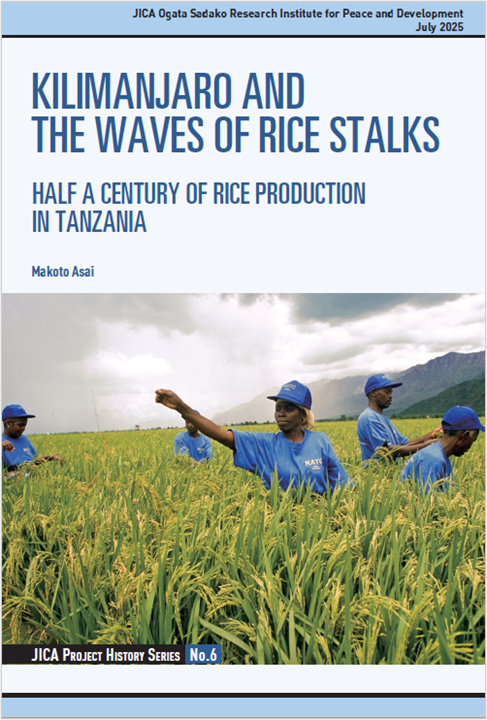Kilimanjaro and the Waves of Rice Stalks: Half a Century of Rice Production in Tanzania

"Golden stalks of rice are still swaying in the wind as they await harvest in the Lower Moshi scheme. Beyond them, Mt. Kilimanjaro stands, just as it did half a century ago " (from Chapter 8 of this book).
Witnessed by author Asai Makoto during his time in Tanzania as an expert in rice cultivation, this scene stands as a testament to the achievements of the rice farming assistance that JICA has undertaken with local communities in Tanzania since the 1970s.
After gaining independence in 1961, Tanzania pursued nation-building centered on agriculture. The country sought assistance for regional development from various nations, and Japan took charge of the Kilimanjaro Region, which is the setting for this book. In 1974 the Kilimanjaro Region Integrated Development Plan was formulated, and within this plan JICA proposed agricultural development projects, including the development of irrigation facilities.
In the Lower Moshi Irrigation Scheme in the Kilimanjaro Region, which became the hub for rice cultivation assistance, irrigated rice farming grew rapidly. By the mid-1990s, this assistance had spread nationwide. At that time, the average Tanzanian farmer owned "only four hoes, a sickle, two knives, and a panga (machete)." This book vividly portrays the Japanese experts who sought to introduce rice farming methods that even farmers with such limited resources could adopt, as well as the agricultural extension workers and farmers who participated in the training offered by Japan. Collectively, they strived for a landscape where rice stalks ripen uniformly and abundantly, making the entire paddy field look like a “golden carpet" —a vision that was consistently presented as their ultimate goal throughout the training sessions.
Furthermore, Japan’s support in improving paddy rice cultivation in Tanzania — alongside promoting NERICA (New Rice for Africa) varieties in Uganda and enhancing rain-fed rice cultivation in Ghana—laid the foundation for an international initiative: the Coalition for African Rice Development (CARD). At the Fourth Tokyo International Conference on African Development (TICAD IV) in 2008, Japan declared its commitment to enhancing food production in Africa through rice farming, and this cooperation continues to this day.
In the past, rice was a precious source of cash income in Tanzania, and ordinary people could only afford to eat it on special occasions. Half a century later, however, rice has become a regular part of their diet. Furthermore, Tanzania has transformed from a rice-importing country into East Africa's leading exporter. Asai states that, amidst harsh public criticism regarding aid to developing countries, the tangible results of this assistance and the visible joy of farmers who had tripled their harvest, speak louder than words. "Rice is life"—this book conveys the sincere reflections of the author who has closely observed the transformation of Tanzanian rice farming over the years.
scroll